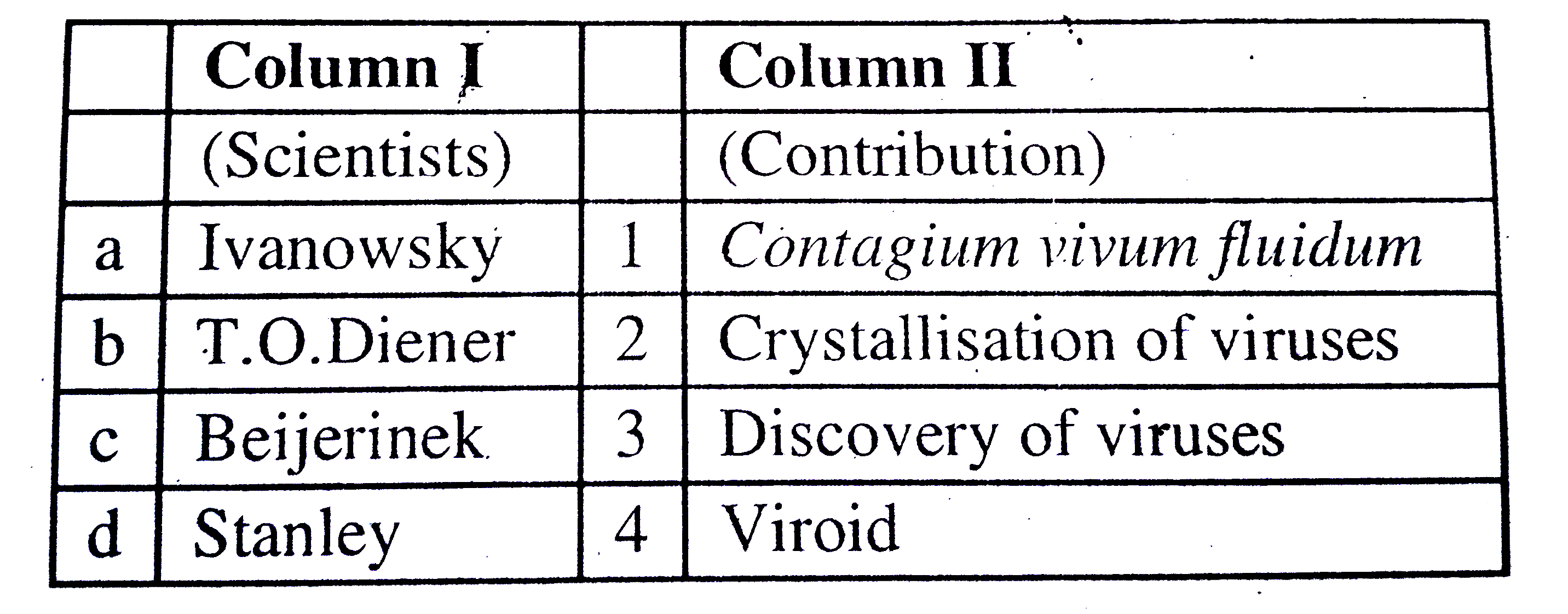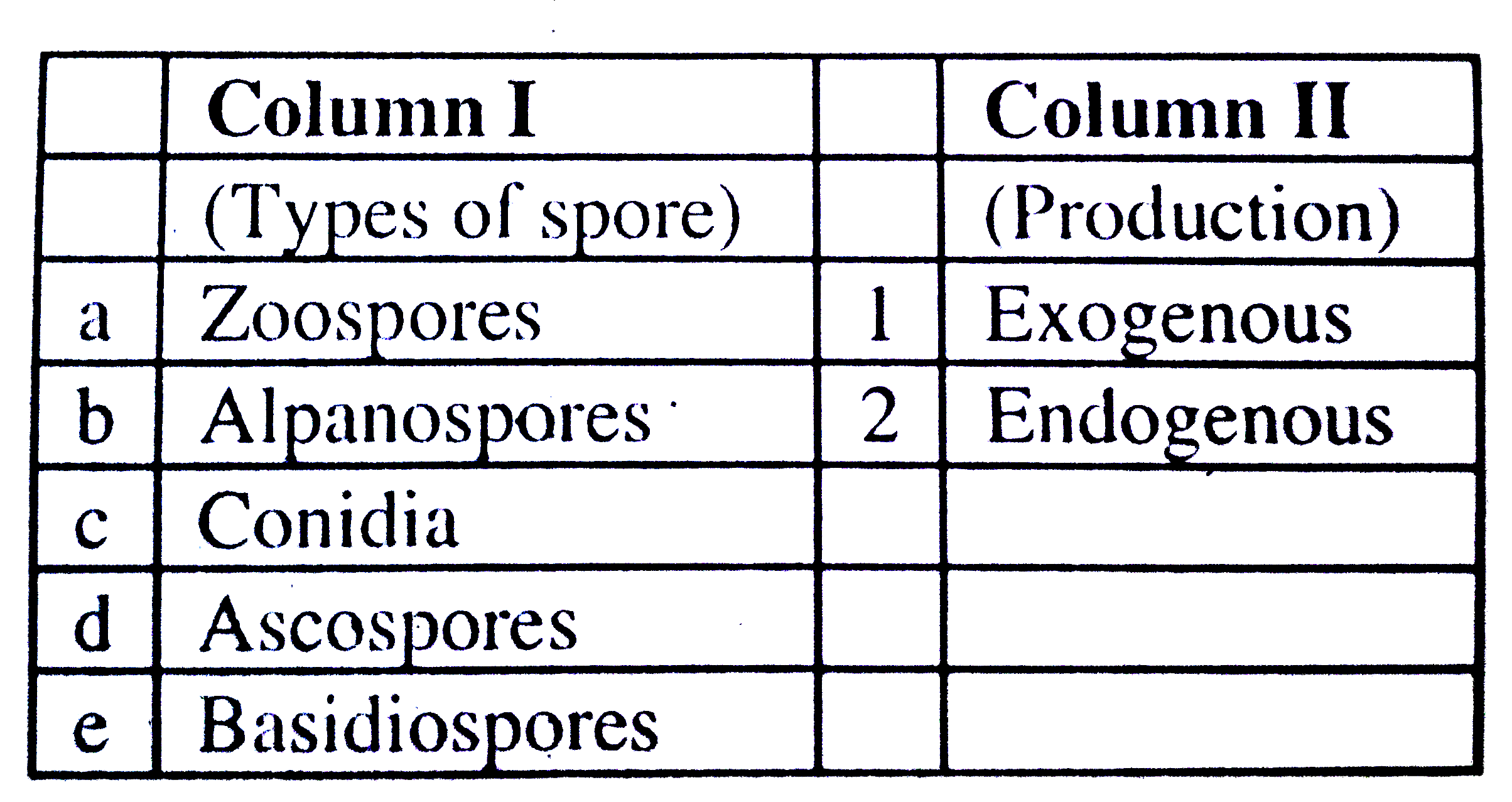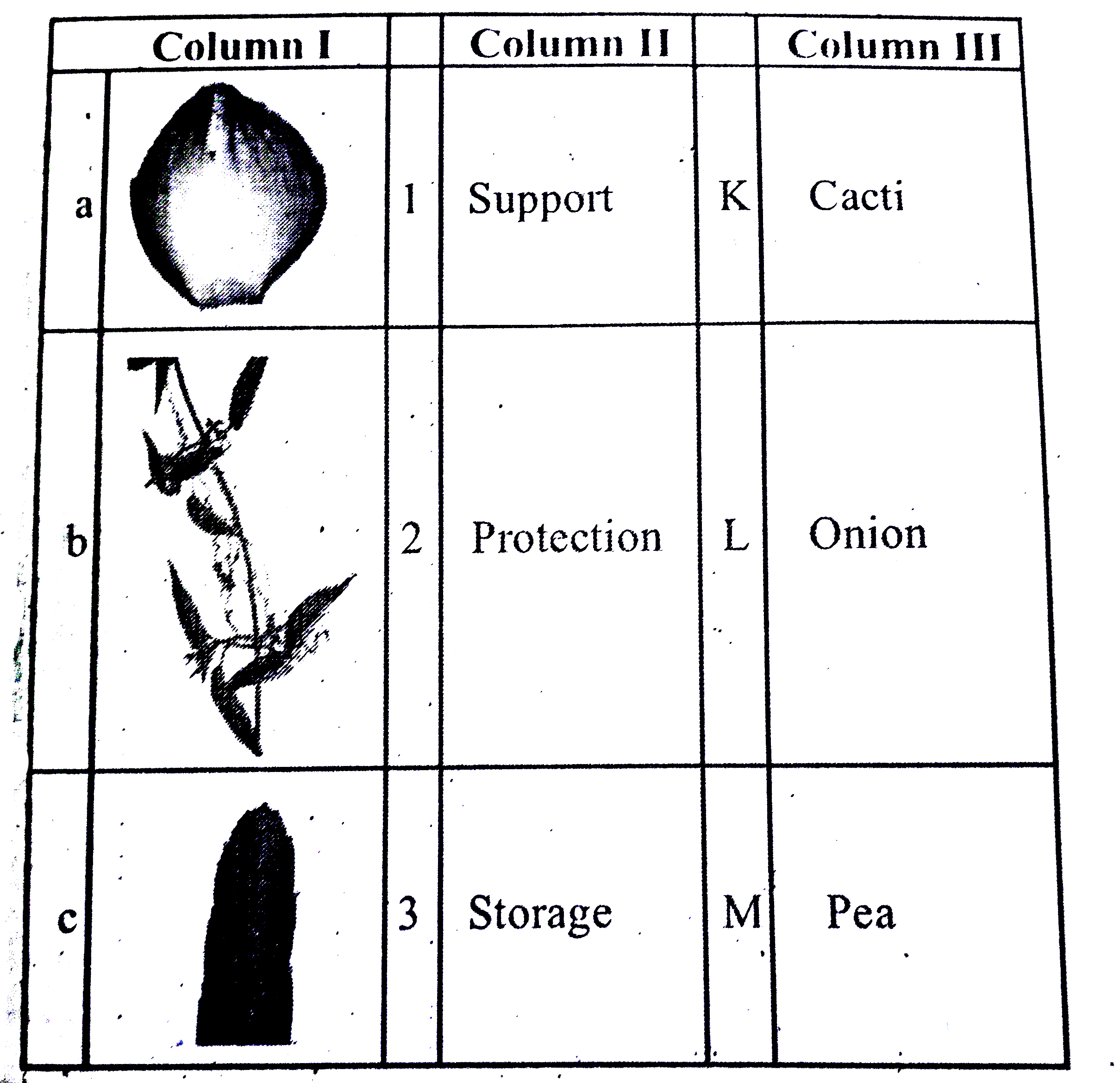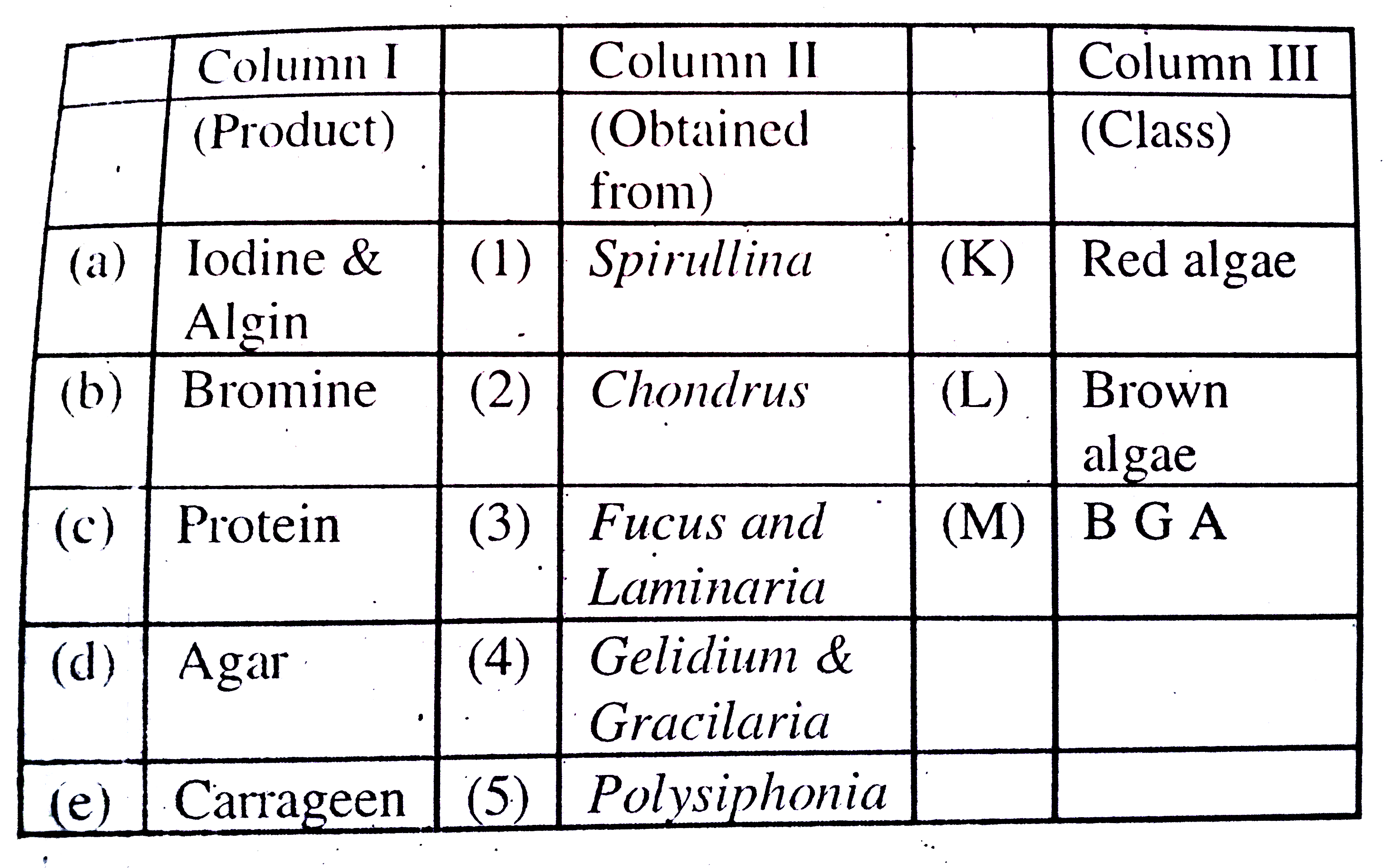Match the columns I and II, ad choose the correct combination from the options given.
Column IColumn II(a)Haplontic life - cycle(i) Gymnosperms and Angiosperms(b)Diplontic life - cycle.(ii) Spirogyra(c)Haplo- diplontic life(iii) Bryophytes and pteridophytes
a - i, b - iii, c - ii
a - iii, b - i, c - ii
a - ii, b - i, c - iii
a - ii, b - iii, c - i
The correct Answer is:C
To solve the matching question between Column I and Column II regarding the life cycles of plants, we will analyze each life cycle type and its corresponding examples step by step.
1. Understanding Haplontic Life Cycle:
- In the haplontic life cycle, the dominant phase is the gametophytic phase, which is haploid. The sporophytic phase is represented only by the zygote, which undergoes meiosis to produce haploid spores.
- Example: Spirogyra (an alga) is a classic example of a haplontic life cycle.
- Match: (a) Haplontic life cycle → (ii) Spirogyra.
2. Understanding Diplontic Life Cycle:
- In the diplontic life cycle, the dominant phase is the sporophytic phase, which is diploid. The gametophytic phase is reduced and is represented only during gamete formation.
- Examples: Gymnosperms and Angiosperms exhibit a diplontic life cycle.
- Match: (b) Diplontic life cycle → (i) Gymnosperms and Angiosperms.
3. Understanding Haplo-Diplontic Life Cycle:
- The haplo-diplontic life cycle features both haploid and diploid phases that are relatively equal in prominence. Both phases are multicellular.
- Examples: Bryophytes (like mosses) and Pteridophytes (like ferns) demonstrate a haplo-diplontic life cycle.
- Match: (c) Haplo-diplontic life cycle → (iii) Bryophytes and Pteridophytes.
Summary of Matches:
- (a) Haplontic life cycle → (ii) Spirogyra
- (b) Diplontic life cycle → (i) Gymnosperms and Angiosperms
- (c) Haplo-diplontic life cycle → (iii) Bryophytes and Pteridophytes
Final Match:
- A → ii
- B → i
- C → iii
Correct Combination:
Based on the matches, the correct option is Option 3.
---
- In the haplontic life cycle, the dominant phase is the gametophytic phase, which is haploid. The sporophytic phase is represented only by the zygote, which undergoes meiosis to produce haploid spores.
- Example: Spirogyra (an alga) is a classic example of a haplontic life cycle.
- Match: (a) Haplontic life cycle → (ii) Spirogyra.
- In the diplontic life cycle, the dominant phase is the sporophytic phase, which is diploid. The gametophytic phase is reduced and is represented only during gamete formation.
- Examples: Gymnosperms and Angiosperms exhibit a diplontic life cycle.
- Match: (b) Diplontic life cycle → (i) Gymnosperms and Angiosperms.
- The haplo-diplontic life cycle features both haploid and diploid phases that are relatively equal in prominence. Both phases are multicellular.
- Examples: Bryophytes (like mosses) and Pteridophytes (like ferns) demonstrate a haplo-diplontic life cycle.
- Match: (c) Haplo-diplontic life cycle → (iii) Bryophytes and Pteridophytes.
- (a) Haplontic life cycle → (ii) Spirogyra
- (b) Diplontic life cycle → (i) Gymnosperms and Angiosperms
- (c) Haplo-diplontic life cycle → (iii) Bryophytes and Pteridophytes
- A → ii
- B → i
- C → iii
Based on the matches, the correct option is Option 3.
Similar Questions
Match the columns I and II, and choose the correct combination from the options given.

View SolutionMatch the columns I and II and choose the correct combination from the option given

View SolutionMatch the columns I and II, and choose the correct oabination from the options given.


View SolutionMatch the columns I and II, and choose the correct combination from the options given :-

View SolutionMatch the columns I and II, and choose the correct combination from the options given :-

View SolutionMatch the columns I and II, and choose the correct combination from the options given :-

View SolutionMatch the columns I and II, and choose the currect combination from the options given :-

View SolutionMatch the columns I, II and III and choose the correct combination from the option given :

View SolutionMatch the column I, II and III and choose the correct combination from the options given :-

View SolutionMatch the columns I, II and III, and choose the correct combination from the options given :-

View Solution
